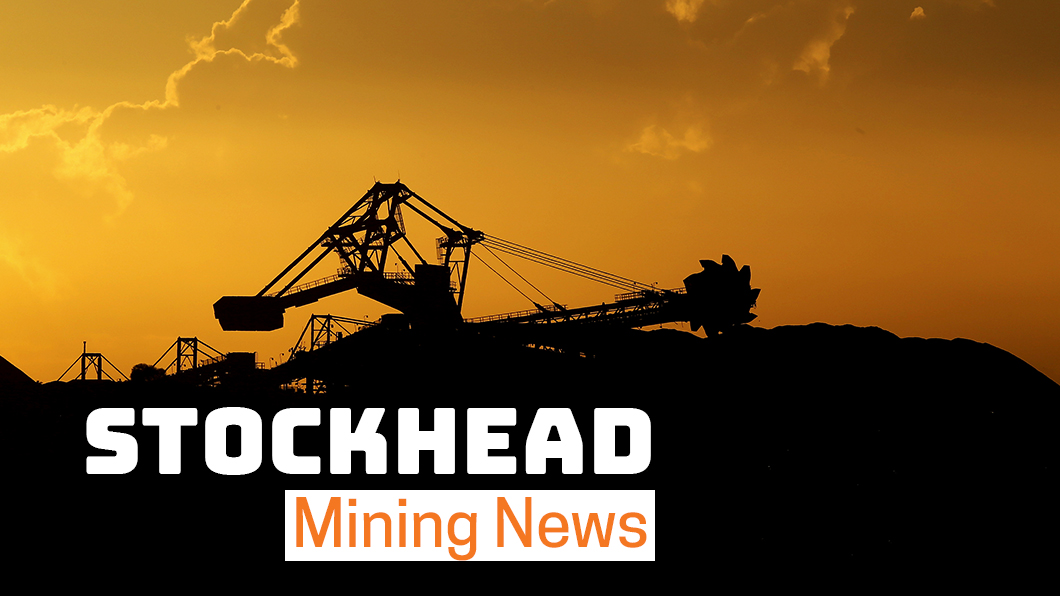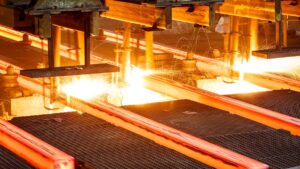Mt Gibson’s low grade iron ore loses its Shine

Pic: Bloomberg Creative / Bloomberg Creative Photos via Getty Images
The junior end of the iron ore sector is continuing to contract in the wake of volatile prices, with Mt Gibson Iron (ASX:MGX) confirming plans on Friday to suspend its new Shine mine in WA’s Mid West.
It is the latest high-cost operation to fall by the wayside since iron ore prices lost more than half their value over the past quarter, falling from record highs of around US$230/t to a low of US$92.98/t last week.
They have since recovered to around US$120/t on restocking ahead of the Chinese holiday season and, grimly, amid potential supply disruptions following the death of a 25-year-old drill and blast worker at Fortescue’s Solomon hub on Thursday.
But the unpredictability, mixed with soaring freight costs, has been too much for some juniors to bear. Mt Gibson joins Venture Minerals (ASX:VMS), GWR Group (ASX:GWR) and private miner Indus Mining at the Ridges mine in the Kimberley in having suspended operations over the past two weeks.
Others which had their production hedged at higher prices like Strike Resources (ASX:SRK), Fe Limited (ASX:FEL) and Fenix Resources (ASX:FEX) appear to be safe for now, with the hedges buying them time to work on reducing their cost base.
The long-standing junior iron ore miner will place Shine on care and maintenance after a final shipment in October, having only just begun transporting ore to Asia in August, and withdraw its guidance for 2021-22.
“This is a disappointing decision for the Company given that the Shine mine is in its first year of operation,” the company said.
“However, it is a commercially sensible one necessary to limit cash outflows and preserve the future optionality of the Shine deposit.
“The substantial recent decline in iron ore prices has been exacerbated by a significant widening of discounts and penalties for medium and lower grade iron ore products, a rapid rise in shipping freight rates from Geraldton Port (from under US$15 per tonne shipped to China to over US$30 per tonne currently) and relatively high road transportation costs in the Mid-West given the distances involved.”
Shine will wait for better market conditions
The big Pilbara iron ore miners like BHP and Rio are still raking in huge margins at prices in and around US$100/t.
But smaller operators eat much larger unit costs for a variety of reasons, including distance to port, infrastructure, economies of scale and smaller shipments that inflate unit freight costs.
Mt Gibson Iron managing director Peter Kerr said the company had to respond to ‘deteriorating market conditions’, which have come about amid a big drop in steel production enforced by the Chinese Government.
“Our Shine operating and commercial personnel have worked extremely hard to bring the mine into production this year, so it is very disappointing that we must now suspend operations,” he said.
“However, this is the commercially sensible course of action in order to preserve value given the rapid deterioration of market conditions and the recent increase in shipping freight costs to record levels.
“However, we are optimistic that market conditions will allow us to restart the Shine operation in the future and we will place the site into a position where a prompt restart can be considered in due course.”
Iron ore suffers worst price drop since GFC
The 58% decline in iron ore prices in the September Quarter was the most severe in percentage terms since prices nosedived 68% in three months in 2008 as the Global Financial Crisis hit, according to Fastmarkets Index Manager Peter Hannah.
In an article on LinkedIn, Hannah said steel production cuts by China had been the largest contributor to the crash, with the heavily publicised debt crisis engulfing property developer Evergrande more of a ‘red herring’.
“Considering the country was churning out steel at a rate around 12% higher during the first half of 2021, the cutback in the second half was always going to need to be severe,” he said.
“To many, apparently, it seemed unthinkably severe. Whether or not this goal is reached, it’s clear that most market participants had been underestimating the Chinese government’s resolve to prioritize environmental targets, even at the expense of growth.”
Supply has also been rising incrementally, with some mills heard re-selling contracted material on the spot market, Hannah said, although Brazil’s Vale is already showing signs it will not reach its ambitious growth targets in 2022.
Want to ride out the storm? High grades are the key
High grade iron ore remains resilient however, Hannah said, noting that higher grade products are US$10/t better off than they were the last time the price of iron ore hit US$90/t back in May last year.
“The persisting appetite for higher-grade products owes largely to two factors: 1) Record high coke prices, and 2) Still-healthy steelmaker profit margins,” he said.
“Being unable to raise productivity due to imposed output curbs, mills with multiple blast furnaces are understood to be reacting to these conditions by idling one or two furnaces, whilst running their remaining capacity at high productivity.”
Mt Gibson Iron itself is a good case study in the growing divergence between low and high grade iron ore.
In one sense Shine’s development kept its Mid West operations going after the exhaustion of MGX’s Extension Hill Mine.
But it was an opportunistic play on a rising iron ore price, with its 58% product attracting debilitating and growing discounts in normal circumstances.
It is continuing waste-stripping at Koolan Island in WA’s north however, where Mt Gibson expects to ship hematite DSO at a grade of 65%.
That will make Mt Gibson one of the few non-Brazilian miners to compete with Vale for grade and capture the handy premium associated with 65% product.
As it is an island port and located closer to Asia, Koolan Island is also not as badly exposed to transport and shipping costs afflicting Mt Gibson’s Mid West operations.
Mt Gibson said Koolan Island will ship around 2Mt of ore this year and is projected to generate strong cash flows over its five-year life.
Where to from here?
Hannah says there is a chance the recent dive in iron ore prices resembled an ‘overcorrection’ and noted that attitudes to price levels were also highly subjective.
“My analyst colleagues at Fastmarkets’ Research department had been predicting a substantial drop in iron ore prices since much earlier in the year, although admit that the fall was quicker and sharper than expected,” he said.
“In their weekly steel raw materials tracker they note that in their view the recent move to $92/t may be something of an overcorrection however, and that the potential exists for a modest recovery in the coming weeks.”
He said cost pressures could be felt at higher price levels in years to come.
“Something to watch out for though is how much the costs of the marginal producers may have increased in recent years, and are likely to continue increasing into the future on the back of more stringent global ESG requirements and rising consumables prices,” he said.
“In other words, don’t be too surprised if cost curve pressure starts to be felt at higher price levels going forward than it perhaps has historically.”
However, the ongoing strength of steel prices and businesses, as well as power rationing in China, that could see restrictions placed on scrap steel refining technologies like electric arc furnaces, could see bids flow back into iron ore.
At Stockhead, we tell it like it is. While Fe Limited, Strike Resources and Venture Minerals are Stockhead advertisers, they did not sponsor this article.
Related Topics
UNLOCK INSIGHTS
Discover the untold stories of emerging ASX stocks.
Daily news and expert analysis, it's free to subscribe.
By proceeding, you confirm you understand that we handle personal information in accordance with our Privacy Policy.








